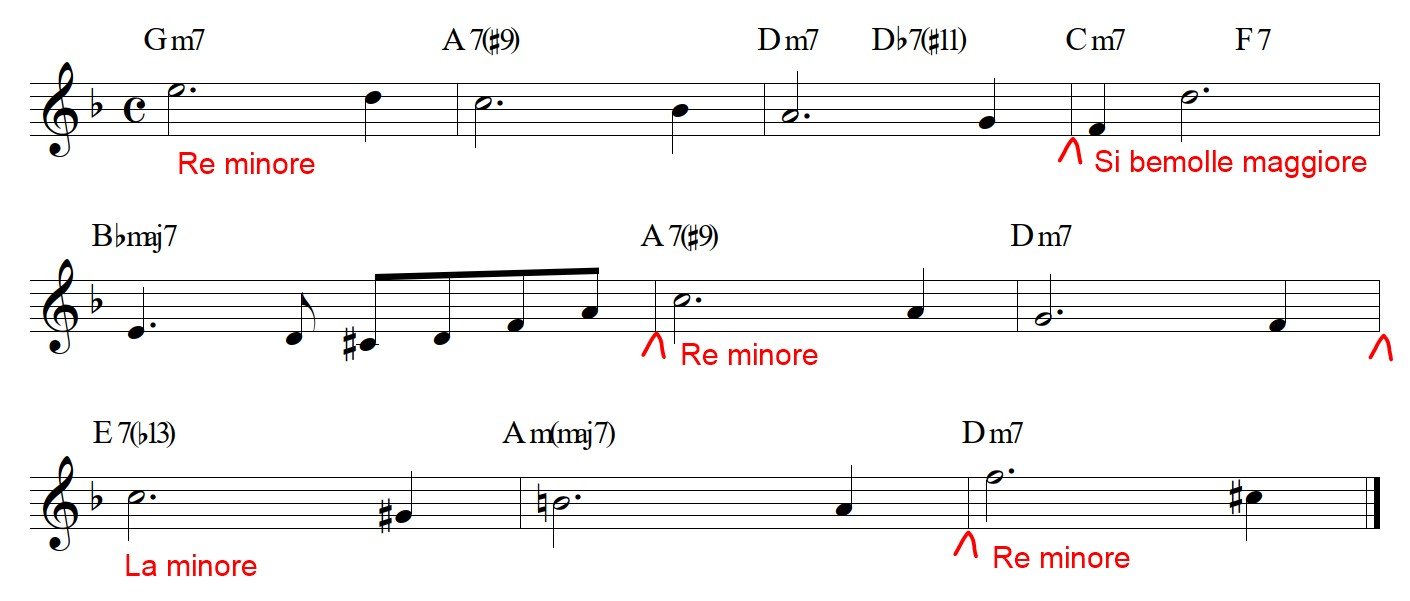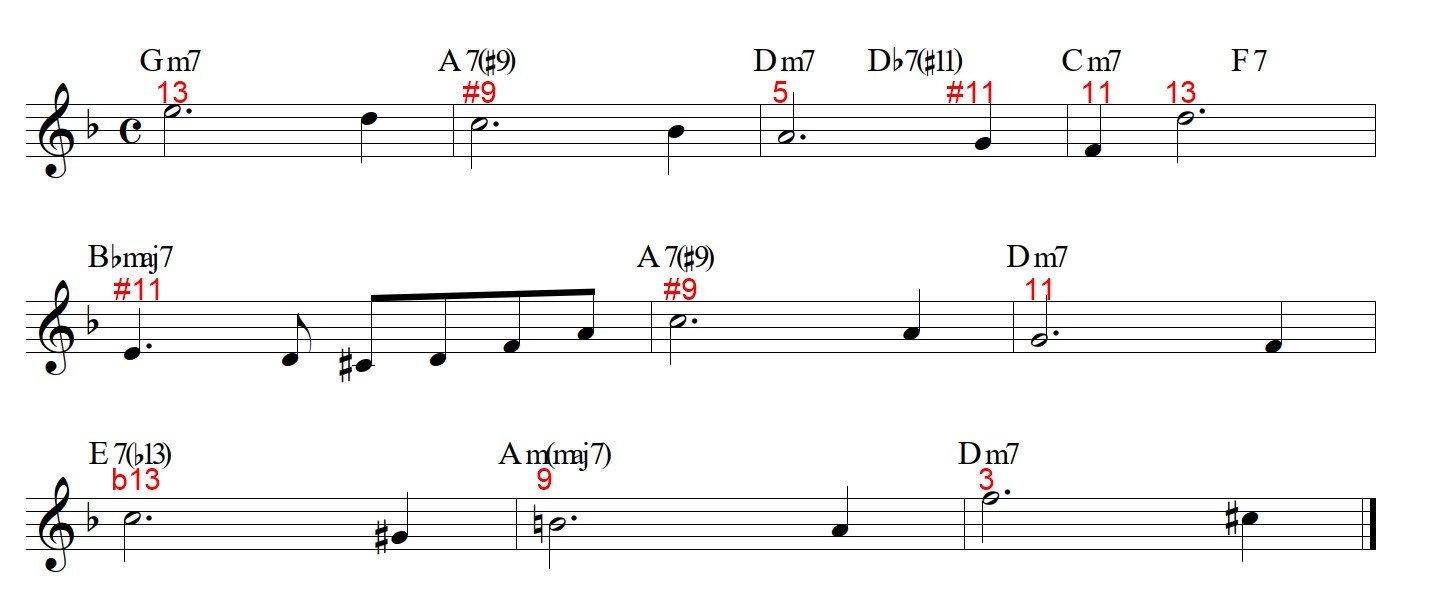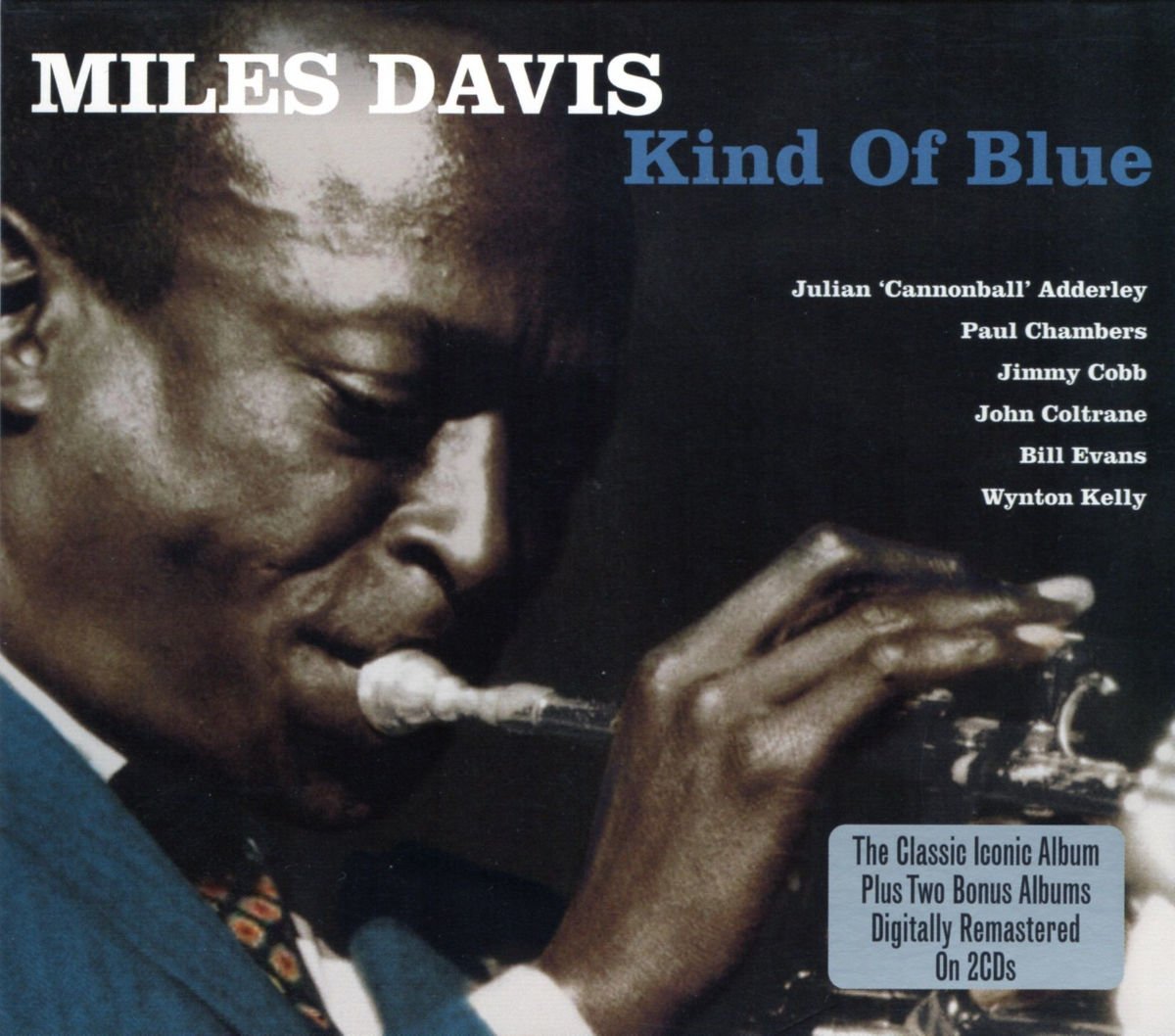[Monday Notes No. 171] Blue In Green is a track from Miles Davis’ famous album Kind Of Blue, released in 1959 and considered the most successful jazz album ever. Miles Davis wanted to explore modal jazz with this work, and helped to spread it among musicians and audiences alike. I tried to analyse the melody, harmony and form of Blue In Green. Here is what I discovered.
Let’s start with the title: Blue In Green. Any association between music and colours is obviously arbitrary, the sounds are heard while the colours are watched. Yet this title helps to illustrate the aesthetics of Miles Davis and modal music. This mixing of colours, blue and green, recalls the technique of the Impressionist painters, who towards the end of the 19th century abandoned realist painting in favour of greater freedom and creativity.
Likewise, modal jazz abandons the complicated subtleties of tonal music, with all its prescriptions such as tonality, cadences and modulation, in favour of a freer system. In modal jazz, the musician can play with fewer harmonic constraints and greater expressiveness, exploring new avenues in his or her improvisations.
Blue in Green actually is not a true modal piece, as it does not abandon the rules of tonal harmony at all. In fact, the piece is in the key of D minor, then modulates to the key of B flat major at measures 4-5 and to the key of A minor at measures 8-9.

Nevertheless, Blue In Green is an innovative piece for at least three elements: melody, form and metrics. Let us begin with the melody; while remaining within a tonal framework, with cadences and modulations, the melody almost always uses notes outside the chord, or rather notes of tension.
For example, on the first chord Gm7, the melody is on the thirteenth E. In the second measure, the chord is A7 and the melody sings C, the augmented ninth. A complete analysis of the melody follows, along with the relationship of the various notes to the underlying chords. We observe that the melody is very unusual, the theme almost seems to contradict the underlying chords, it almost always stops on tense notes.

The piece is also unusual in terms of form, as it has a duration of ten measures. Jazz standards are normally built on eight-measure phrases; there are numerous 32-measure pieces, for example, with the form AABA or ABAC. There are also 16-measure pieces, such as Summertime or Lady Bird, and of course the classic 12-measure blues.
Blue in Green, with its ten measures, therefore has an unusual form. Moreover, the beginning on the IV degree and the very sophisticated melody tend to make the beginning and end of the harmonic progression unclear, giving the feeling of a circular form.
A third element of originality in Blue In Green is the change of meter during the improvisations. The song is in fact structured in this way:
| Intro, piano and bass | 8 bars | double time |
| Theme, trumpet | 1 chorus | normal time |
| Improvisation, trumpet | 1 chorus | normal time |
| Improvisation, piano | 2 choruses | double time |
| Improvisation, sax | 2 choruses | double time |
| Improvisation, piano | 2 choruses | quadruple time |
| Improvisation, trumpet | 2 choruses | normal time |
| Theme, piano | 2 choruses | quadruple time |
The slippery and variable metre thus adds to the ten-measure form and the melody that lies on tense notes. The result is an unpredictable flow, where the sense of the chorus is almost completely lost and the discourse remains tense and liquid, depriving the listener of any point of reference. In this way, Miles Davis and his band break the classical patterns of jazz, which was strongly anchored to well-established and repetitive harmonic forms and concepts.
A quirk about Blue In Green: the song was written by pianist Bill Evans, but it was Miles Davis who signed it, crediting himself as composer. On other occasions too, Miles took credit for other people’s compositions, for example with Donna Lee composed by Charlie Parker, but registered under his own name.
Miles Davis was a musician with a strong personality. He evidently felt that his bandmates were debtors to him for the many musical ideas he shared with them, and he repaid himself by taking over their compositions! Certainly we jazz fans are indebted to him for the wonderful records he left us, including Kind Of Blue.
Until next Monday!


